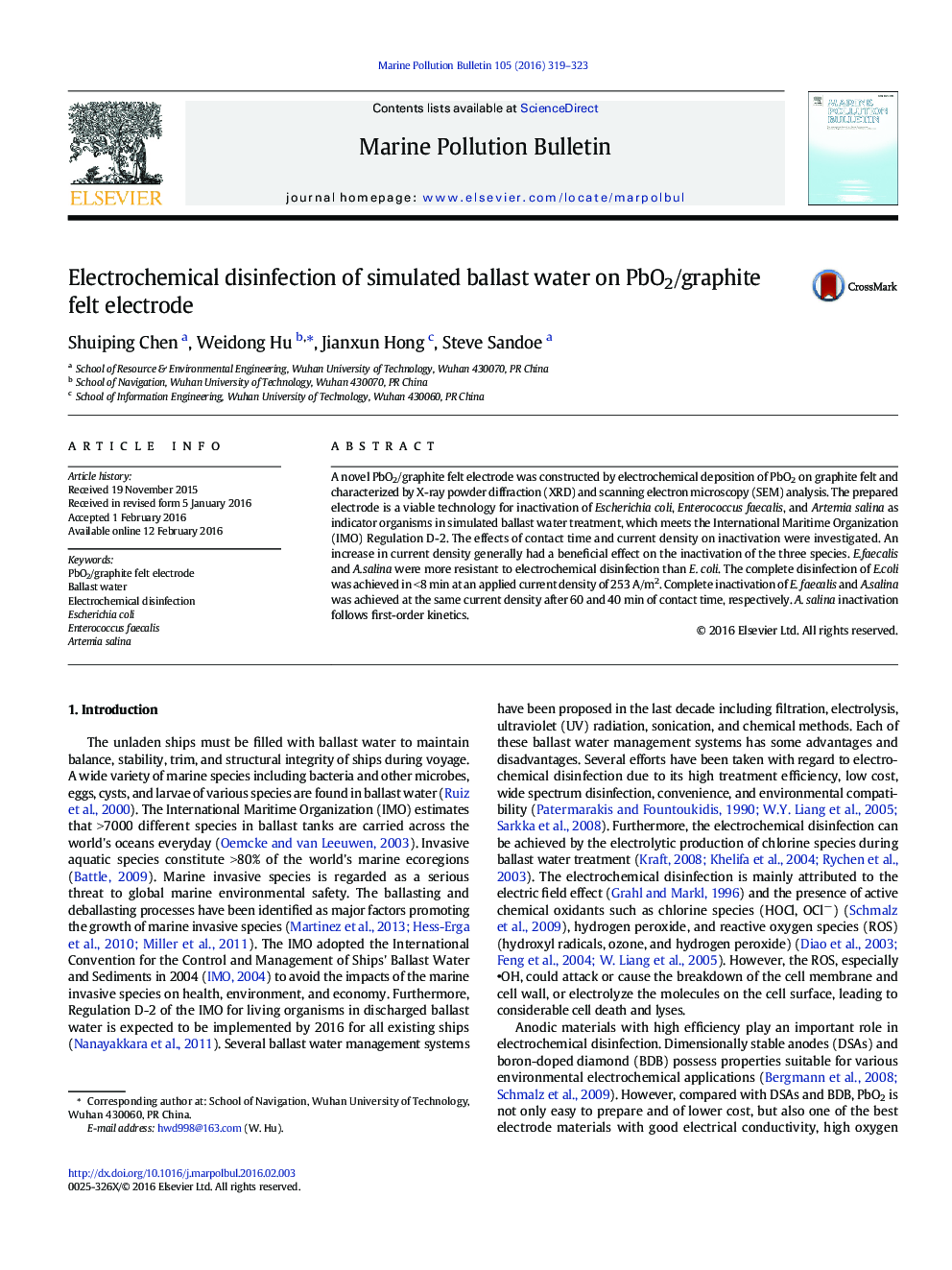| Article ID | Journal | Published Year | Pages | File Type |
|---|---|---|---|---|
| 4476545 | Marine Pollution Bulletin | 2016 | 5 Pages |
•A novel PbO2/graphite felt anode was developed for the electrochemical treatment of the simulated ballast water.•The technology meets the IMO D‐2 regulation and provides a high degree of removal of the microorganisms of ballast water without any additional chemical substances.•E.faecalis, E.coli, and A.salina cells in simulated ballast water were completely inactivated after 60, 8 and 40 min of contact time at 253 A/m2 of current density, respectively.
A novel PbO2/graphite felt electrode was constructed by electrochemical deposition of PbO2 on graphite felt and characterized by X-ray powder diffraction (XRD) and scanning electron microscopy (SEM) analysis. The prepared electrode is a viable technology for inactivation of Escherichia coli, Enterococcus faecalis, and Artemia salina as indicator organisms in simulated ballast water treatment, which meets the International Maritime Organization (IMO) Regulation D-2. The effects of contact time and current density on inactivation were investigated. An increase in current density generally had a beneficial effect on the inactivation of the three species. E.faecalis and A.salina were more resistant to electrochemical disinfection than E. coli. The complete disinfection of E.coli was achieved in <8 min at an applied current density of 253 A/m2. Complete inactivation of E. faecalis and A.salina was achieved at the same current density after 60 and 40 min of contact time, respectively. A. salina inactivation follows first-order kinetics.
